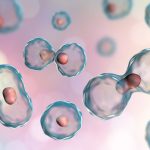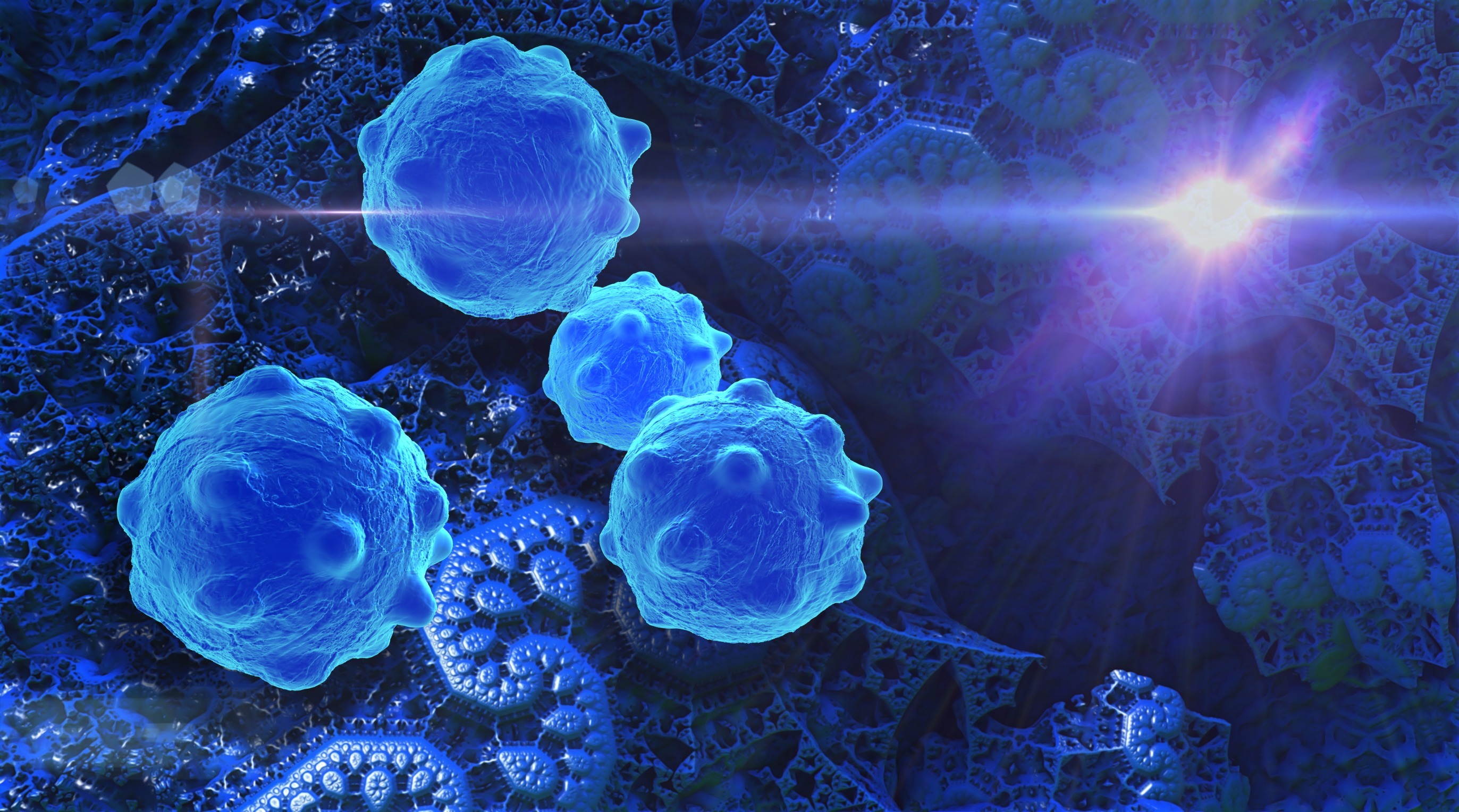Pyroptosis is a form of programmed cell death characterized by cell swelling, membrane rupture, and the release of inflammatory cytokines. Unlike apoptosis, which is a non-inflammatory form of cell death, pyroptosis triggers strong immune responses and is primarily associated with infections and inflammatory diseases.
Key Features of Pyroptosis
✔ Inflammatory – Releases IL-1β and IL-18, activating immune responses.
✔ Caspase-Dependent – Mediated mainly by caspase-1, but sometimes caspase-4, -5, or -11 (non-canonical pathway).
✔ Plasma Membrane Rupture – Leads to cell lysis and leakage of intracellular contents.
✔ Gasdermin Activation – Forms pores in the membrane, causing cell death.
Mechanism of Pyroptosis
1. Activation of Inflammasomes
- Inflammasomes are protein complexes that detect pathogens (bacteria, viruses) or danger signals (DAMPs, toxins).
- The most studied inflammasome is NLRP3, but others (e.g., AIM2, NLRC4) also induce pyroptosis.
2. Caspase Activation
-
Canonical Pathway (Caspase-1 Dependent)
- Activated by inflammasomes.
- Caspase-1 cleaves pro-IL-1β and pro-IL-18, leading to cytokine release.
- Cleaves gasdermin D (GSDMD), forming pores in the membrane.
-
Non-Canonical Pathway (Caspase-4, -5, -11 Dependent)
- Directly activated by intracellular LPS (lipopolysaccharides) from Gram-negative bacteria.
- Caspase-4, -5 (human) and caspase-11 (mouse) cleave GSDMD, triggering pyroptosis.
3. Membrane Pore Formation
- GSDMD forms pores, leading to ion imbalance, swelling, and membrane rupture.
- The release of DAMPs (e.g., HMGB1, ATP, IL-1β, IL-18) amplifies inflammation.
Functions and Biological Roles
1. Host Defense Against Infections
- Eliminates infected cells to prevent pathogen replication.
- Triggers strong immune responses to recruit immune cells.
2. Chronic Inflammation & Disease
- Sepsis – Uncontrolled pyroptosis leads to widespread inflammation.
- Atherosclerosis – Inflammasome activation contributes to plaque formation.
- Neurodegenerative Diseases – Pyroptosis is linked to Alzheimer’s and Parkinson’s disease.
- Cancer – Some cancers evade immune detection by inhibiting pyroptosis.
Pyroptosis vs. Other Forms of Cell Death
| Feature | Pyroptosis | Apoptosis | Necroptosis |
|---|---|---|---|
| Inflammatory? | ✅ Yes | ❌ No | ✅ Yes |
| Key Enzyme | Caspase-1, -4, -5, -11 | Caspase-3, -8, -9 | RIPK1, RIPK3, MLKL |
| Membrane Rupture? | ✅ Yes | ❌ No | ✅ Yes |
| Cytokine Release? | ✅ IL-1β, IL-18 | ❌ No | ✅ Yes |
| Reversible? | ❌ No | ❌ No | ✅ Possible |
Potential Therapeutic Targeting
🔹 Inflammasome Inhibitors – Targeting NLRP3 to prevent excessive inflammation.
🔹 Caspase Inhibitors – Blocking caspase-1 or caspase-11 to stop pyroptosis.
🔹 Gasdermin Inhibitors – Preventing pore formation to control cell lysis.
Diseases Related to Pyroptosis
Pyroptosis plays a key role in infectious diseases, inflammatory conditions, autoimmune disorders, neurodegeneration, cardiovascular diseases, and cancer. While it helps the body fight infections, excessive pyroptosis can lead to tissue damage and chronic inflammation.
1. Infectious Diseases
Bacterial Infections
🔹 Salmonella, Shigella, Listeria, Escherichia coli (E. coli)
- These pathogens activate inflammasomes (e.g., NLRP3, NLRC4), leading to caspase-1–mediated pyroptosis.
- Effect: Clears infected cells but can cause excessive inflammation (e.g., sepsis).
🔹 Mycobacterium tuberculosis (TB)
- TB manipulates pyroptosis to evade immune responses.
- Uncontrolled pyroptosis can worsen lung tissue damage.
Viral Infections
🔹 SARS-CoV-2 (COVID-19)
- Hyperactive inflammasome signaling contributes to cytokine storms in severe COVID-19 cases.
- Excessive pyroptosis damages lung tissue, worsening acute respiratory distress syndrome (ARDS).
🔹 HIV/AIDS
- HIV triggers pyroptosis in CD4+ T cells, leading to immune system collapse.
- Caspase-1 inhibitors may reduce immune cell loss.
🔹 Influenza Virus
- Activates NLRP3 inflammasomes, leading to severe lung inflammation.
2. Autoimmune & Inflammatory Diseases
Sepsis
- Uncontrolled pyroptosis in immune cells causes excessive cytokine release (IL-1β, IL-18), leading to septic shock.
- Pyroptosis inhibitors are being studied to prevent organ failure.
Inflammatory Bowel Disease (IBD)
- Crohn’s disease & ulcerative colitis show increased NLRP3 inflammasome activation.
- Excessive pyroptosis damages intestinal epithelial cells, worsening gut inflammation.
Rheumatoid Arthritis (RA)
- Macrophage pyroptosis contributes to joint inflammation and destruction.
Multiple Sclerosis (MS)
- Microglial pyroptosis in the brain exacerbates neuroinflammation and myelin damage.
3. Neurodegenerative Diseases
Alzheimer’s Disease (AD)
- NLRP3 activation in microglia leads to chronic inflammation and β-amyloid accumulation.
- Blocking pyroptosis may slow cognitive decline.
Parkinson’s Disease (PD)
- Pyroptosis in dopaminergic neurons contributes to neurodegeneration.
- Inflammasome inhibitors could be a potential therapy.
Amyotrophic Lateral Sclerosis (ALS)
- Inflammasome activation and GSDMD-mediated pyroptosis are seen in motor neurons.
4. Cardiovascular Diseases
Atherosclerosis
- Macrophage pyroptosis in artery walls promotes plaque formation and rupture.
- NLRP3 inhibitors may reduce heart attack risk.
Myocardial Infarction (Heart Attack)
- Pyroptosis in cardiomyocytes worsens heart tissue damage post-heart attack.
Hypertension & Stroke
- Endothelial pyroptosis contributes to vascular damage and brain injury in stroke patients.
5. Cancer
Pyroptosis has dual roles in cancer:
✅ Anti-tumor role – Destroys cancerous cells via caspase-1 activation.
❌ Pro-tumor role – Chronic inflammation fuels tumor growth and metastasis.
Cancers with Pyroptosis Involvement
- Colorectal Cancer (CRC) – NLRP3-driven inflammation worsens tumor progression.
- Lung Cancer – Caspase-1 activation may suppress tumors but can also fuel metastasis.
- Breast Cancer & Gastric Cancer – Gasdermin activation is linked to both cell death and immune escape.
Potential Therapy:
- Inducing pyroptosis may help eliminate tumors in resistant cancers.
- Inflammasome inhibitors can limit cancer-associated inflammation.
Potential Therapeutic Approaches
🔹 Inflammasome inhibitors – Target NLRP3, reducing pyroptosis-driven inflammation.
🔹 Caspase inhibitors – Block caspase-1/-4/-5/-11 to prevent cell rupture.
🔹 Gasdermin D inhibitors – Stop pore formation, reducing cell lysis and cytokine release.
🔹 Targeting pyroptosis in cancer – Inducing pyroptosis selectively in tumors may offer a new treatment strategy.



Leave a Reply